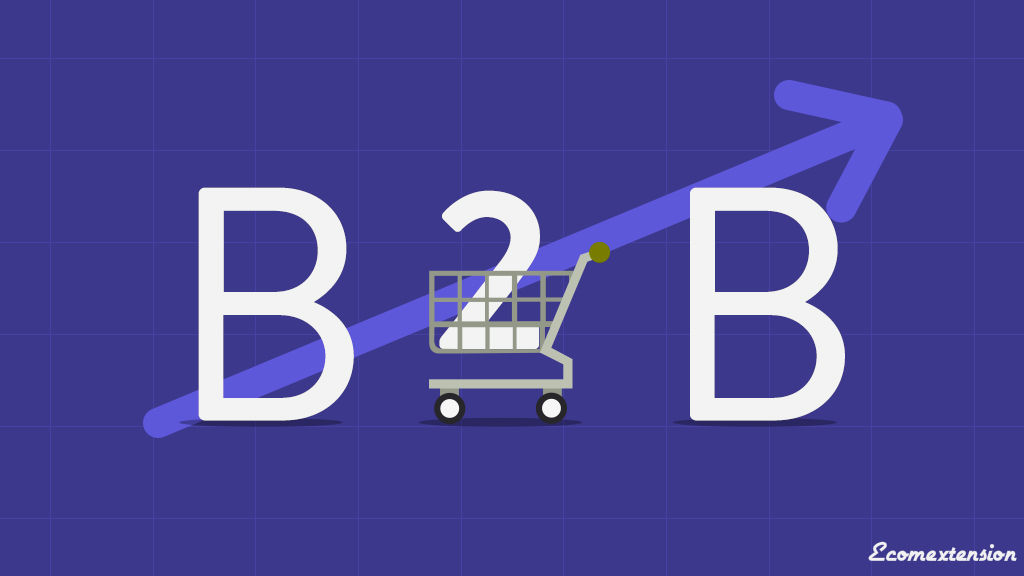
The current inflection point e-commerce, apparently, has several parallels to technology shifts from the past. These are the same shifts that are responsible for creating revolutionary web-based services and apps. Yahoo and AltaVista among many others delivered low-end web applications that revolutionized the use of Internet. Giants like Facebook and Google took a step beyond the revolution and gave birth to the Internet-based apps, services, and platforms. Eventually, this gave rise to B2B e-commerce approaches in last few years.
The overall expenditure on B2B e-commerce platform services, technologies, and apps continues to grow. In fact, the total spending is accounted for more than two times the B2C e-commerce market. As per the predictions offered by Forrester, the B2B will be a business empire worth US$1.1T by 2019 compared to the B2C at US$480B.
There are some challenges like multiple decision makers, longer buying cycles, lower price points, higher volume sales, etc., in B2B. This is why it needs a subtle approach rather than the plain old strategies used in B2C. Though we know the importance of B2B for business success, there are certain points which are often overlooked. Below listed are the top 4 points that are extremely important yet often ignored in the B2B approach. Take a look.
Customer Experience
B2C retailers have set the bar very high. Consumers prefer fast websites that can be accessed from any device. These sites must contain compelling merchandising, helpful reviews, content, and reviews. They expected simple checkout, and strong search and navigation. Online chat is a must.
Business buyers have more expectations. They frequently reorder the similar products and services. Due to this, they want access to freight options, inventory availability, and order history. Rather than approaching sales representatives for larger purchases, they prefer requesting a quote online.
Also, businesses wish to compensate corporate buyers responsible for purchasing products for multiple locations. Their pricing catalog and history should be easily available along with purchase history and budgets.
Some years back, the B2B websites had limited information regarding the product. It used to rely on terse descriptions. They used to assume that consumers ordering online were already aware of the details related to products they were buying.
However, things are different now. Today, customers are shrewd when it comes to online retail. They demand a detailed description of the product such as data sheets, features, specs, videos, images, and so forth. The B2B market requires more content compared to B2C market these days.
The customer experience now depends on data, content, and personalization. It also depends on a solid technology platform and a good design.
Content
Content is a necessity to ensure the success of online B2B. For distributors, this becomes extremely challenging. On the other hand, for manufacturers, it’s important to deliver a rich content for sales channels as well as online stores. This content creation does not have to be difficult. All it requires is a brief product information which can help a buyer to make a quick decision. These details include price, SKU numbers, measuring units, manufacturer name, dependencies, geographic origin, and specifications.
All content must be as normalized as possible. A good content must also include long and short descriptions, hazardous material information, user manuals, material safety data sheets, and installation manuals. Videos must be included and images are mandatory. Manufacturers that ignore the necessity to contributors are at a disadvantage. A rich content is likely to win the race in the long run.
Personalization
Personalization has become a framework for the customer experience in B2B market. There are on-site behaviors and personas that determine what promotions and products are offered to buyers.
Many distributors and manufacturers are heavily investing in pricing and consumer catalogs. Once potential customer logs in, a persona-based system of personalization is leveraged to offer merchandising offers which match the purchase history and geographic location of the customer.
B2B sites must link to the history of product purchases from data warehouses and accounting systems. Personalization is considered as B2B eCommerce’s Holy Grail.
Integration
This is the final and one of the most strategic areas of focus. B2B ecommerce requires seamless and deep integrations in systems that include inventory, pricing, customer records, and products. Typical integrations are as listed below:
Credit Card Payment Gateways.
Freight Systems.
Enterprise Resource Platforms.
Customer Relationship Platforms.
Tax Systems.
New integrations are undoubtedly required with third-party marketing databases, behavioral analytics tools, recommendation engines, and merchandising solutions.
Summary
As much easy as it may sound, none of these factors are easy to build. No wonder why these points are often neglected. Businesses try to take a shortcut, which ends up with awful results. The factors mentioned above require maintenance and initial investments.
Businesses dealing in B2B ecommerce must consider retaining advisers who are well-equipped with the knowledge of system integrations and digital marketing. It takes time, serious efforts, brilliant strategy, and sheer dedication to achieve success in B2B market.
Companies using B2B approach do not have to deal with all of the above- mentioned aspects in the first phase itself. They should keep introducing and considering it one by one. There’s no need to rush at all.
2015 worldwide spending on digital commerce platform software reached approximately $4.7B, attaining 15% year-over- year increase according to Gartner. After all, it’s a huge market. The overall global spending in 2015 on digital commerce platform touch roughly US$4.7 billion. It attained 15 percent year- over-year hike as per Gartner’s report. And, as per the same reports, the market will continue to grow at a CAGR of more than 15 percent from last year through 2020. It will include the revenue collected from maintenance, licenses, and SAAS.


